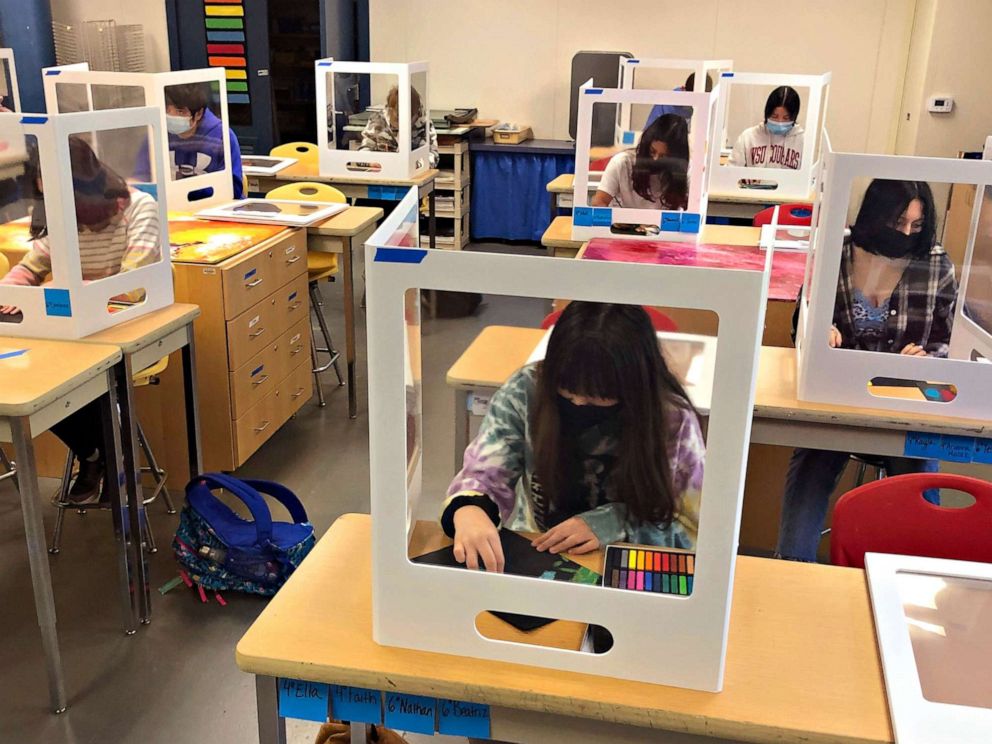Students of color more likely stuck learning online than white counterparts
Education Department finds 60% of kids are either remote or hybrid.
Students of color were significantly more likely to be stuck in virtual learning during the COVID-19 pandemic compared with their white counterparts, according to new data released Wednesday by the Biden administration.
The findings of the Education Department survey come as President Joe Biden is pushing for kids to return to the classroom but facing pushback from teachers unions that say they aren’t convinced returning to the classroom is safe.
A livestreamed federal "summit" was planned for Wednesday.
"It is my top priority to get students back in the classroom for in-person instruction safely and quickly," said Education Secretary Miguel Cardona, who plans in coming weeks to visit local school districts.
The goal, he added, was to work with states to "build successful programs that will reach students most in need this spring, summer and into the fall."
To date, the federal government has had little sway over whether students return to the classroom -- with decisions being made at the local level.

The Trump administration demanded that schools reopen and even threatened funding, but that tactic appeared to have minimal impact. According to a new survey by the Education Department that looked at fourth and eighth graders, 60% of kids are either remote or attending only a couple of days a week in a "hybrid" model. Only 38% attended in-person full time.
The students most impacted were kids of color. In the suburbs, Black, Hispanic and Asian students are twice as likely to attend remotely compared with their white counterparts.
Nationwide, about half of white students were either remote or attending school on a hybrid basis. That’s compared to 74% of Asian students; 72% of Black students and 66% of Hispanic students.
The Education Department survey didn’t provide specifics on whether students of color were more likely to learn online because of family choice. But the data suggests 76% of fourth and eighth graders in the nation attended public schools offering hybrid or full-time instruction.
On Wednesday, the administration said it would release $81 billion in pandemic relief funds -- about a third of the money approved by Congress -- to try to alleviate overcrowding in schools, hire more teachers and jumpstart enrichment programs for kids falling behind.
The Biden administration plans to withhold some $41 billion intended for K-12 schools until governors can submit plans on how states will use the money to reopen classrooms and "close the gaps in education equity that the pandemic has exacerbated," according to the Education Department.
One major issue for schools has been how much space is needed in classrooms to prevent COVID-19 infections from spreading.
Citing the "preponderance of the available evidence from U.S. schools," the Centers for Disease Control and Prevention announced last week that 3 feet of distance among students is sufficient in the classroom so long as masks and other mitigation steps are taken to prevent the spread of COVID-19.
By easing spacing requirements, the new guidance is likely to make it significantly easier for many of the nation’s estimated 57 million K-12 students to return to the classroom in-person full-time.
But teachers’ unions say they aren’t convinced the evidence is there to support the change.
"Our concern is that the cited studies do not identify the baseline mitigation strategies needed to support 3 feet of physical distancing. Moreover, they were not conducted in our nation's highest-density and least-resourced schools, which have poor ventilation, crowding and other structural challenges," wrote Randi Weingarten, head of the American Federation of Teachers, in a letter Tuesday to CDC Director Rochelle Walensky and Cardona.
CDC scientists were expected to participate in Wednesday’s school summit hosted by the Education Department, along with Cardona, Walensky and first lady Jill Biden.




